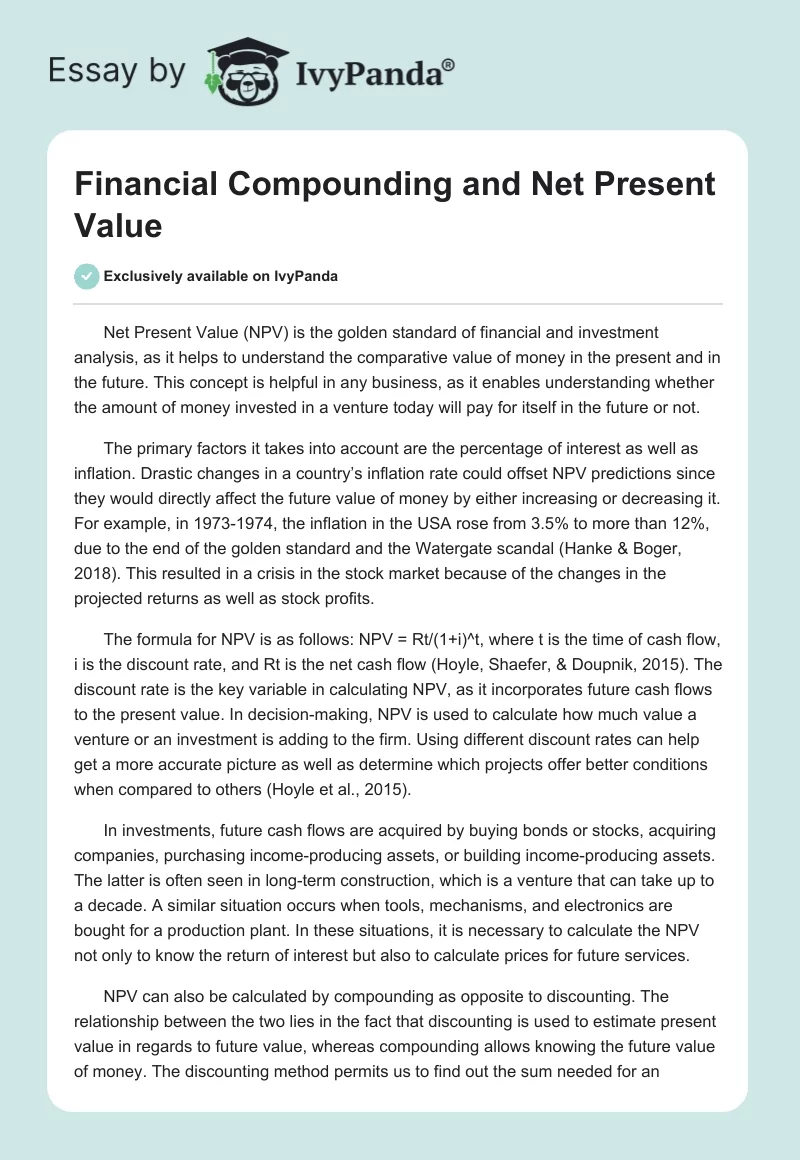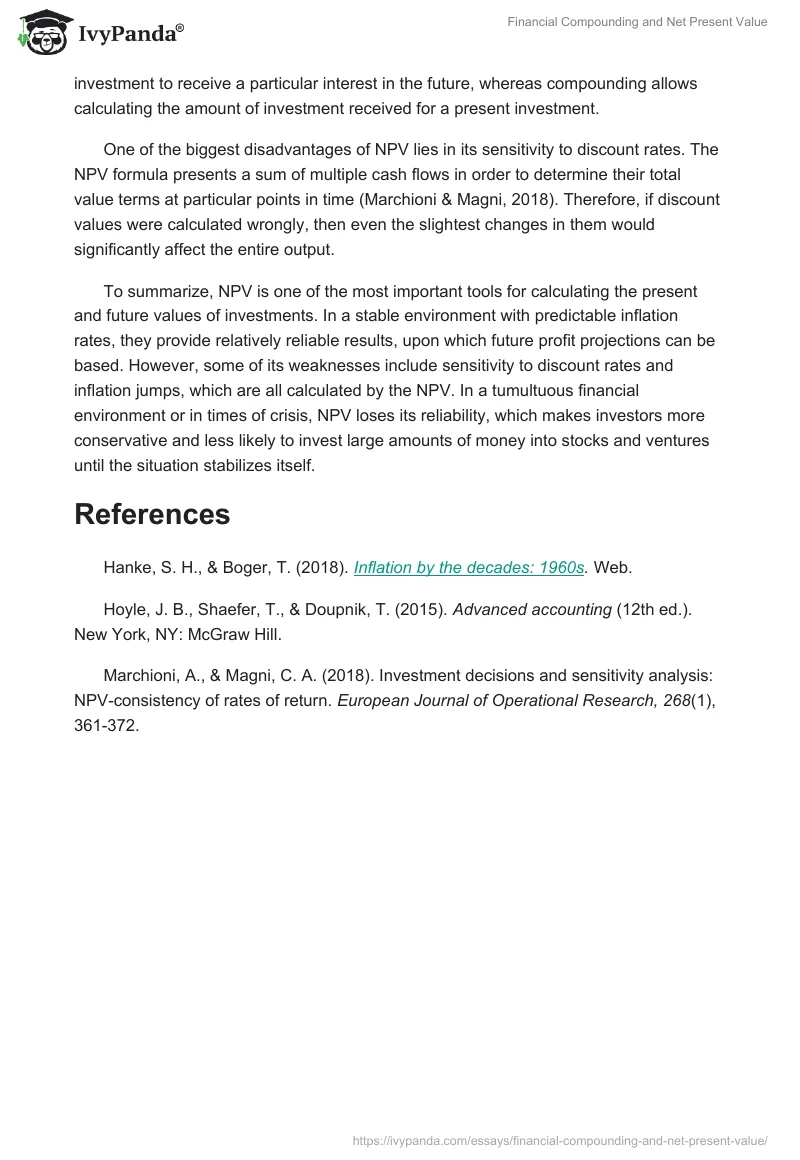Net Present Value (NPV) is the golden standard of financial and investment analysis, as it helps to understand the comparative value of money in the present and in the future. This concept is helpful in any business, as it enables understanding whether the amount of money invested in a venture today will pay for itself in the future or not.
The primary factors it takes into account are the percentage of interest as well as inflation. Drastic changes in a country’s inflation rate could offset NPV predictions since they would directly affect the future value of money by either increasing or decreasing it. For example, in 1973-1974, the inflation in the USA rose from 3.5% to more than 12%, due to the end of the golden standard and the Watergate scandal (Hanke & Boger, 2018). This resulted in a crisis in the stock market because of the changes in the projected returns as well as stock profits.
The formula for NPV is as follows: NPV = Rt/(1+i)^t, where t is the time of cash flow, i is the discount rate, and Rt is the net cash flow (Hoyle, Shaefer, & Doupnik, 2015). The discount rate is the key variable in calculating NPV, as it incorporates future cash flows to the present value. In decision-making, NPV is used to calculate how much value a venture or an investment is adding to the firm. Using different discount rates can help get a more accurate picture as well as determine which projects offer better conditions when compared to others (Hoyle et al., 2015).
In investments, future cash flows are acquired by buying bonds or stocks, acquiring companies, purchasing income-producing assets, or building income-producing assets. The latter is often seen in long-term construction, which is a venture that can take up to a decade. A similar situation occurs when tools, mechanisms, and electronics are bought for a production plant. In these situations, it is necessary to calculate the NPV not only to know the return of interest but also to calculate prices for future services.
NPV can also be calculated by compounding as opposite to discounting. The relationship between the two lies in the fact that discounting is used to estimate present value in regards to future value, whereas compounding allows knowing the future value of money. The discounting method permits us to find out the sum needed for an investment to receive a particular interest in the future, whereas compounding allows calculating the amount of investment received for a present investment.
One of the biggest disadvantages of NPV lies in its sensitivity to discount rates. The NPV formula presents a sum of multiple cash flows in order to determine their total value terms at particular points in time (Marchioni & Magni, 2018). Therefore, if discount values were calculated wrongly, then even the slightest changes in them would significantly affect the entire output.
To summarize, NPV is one of the most important tools for calculating the present and future values of investments. In a stable environment with predictable inflation rates, they provide relatively reliable results, upon which future profit projections can be based. However, some of its weaknesses include sensitivity to discount rates and inflation jumps, which are all calculated by the NPV. In a tumultuous financial environment or in times of crisis, NPV loses its reliability, which makes investors more conservative and less likely to invest large amounts of money into stocks and ventures until the situation stabilizes itself.
References
Hanke, S. H., & Boger, T. (2018). Inflation by the decades: 1960s. Web.
Hoyle, J. B., Shaefer, T., & Doupnik, T. (2015). Advanced accounting (12th ed.). New York, NY: McGraw Hill.
Marchioni, A., & Magni, C. A. (2018). Investment decisions and sensitivity analysis: NPV-consistency of rates of return. European Journal of Operational Research, 268(1), 361-372.


